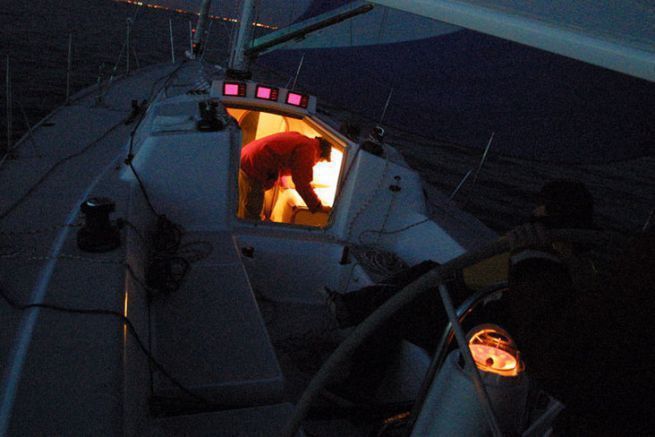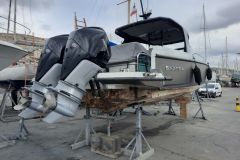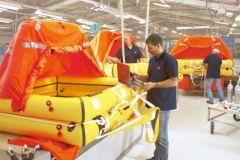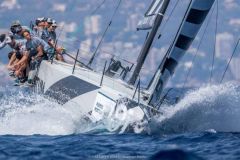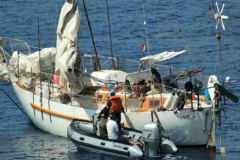The essential adaptation phase
The eye is an organ that we generally use very badly, especially at night. He has the ability to see well at night, but needs several minutes to adapt (between 10 and 15 minutes). During adaptation, the pupil opens, its diameter increases from 2 to 8 mm. This allows about 16 times more light to pass through at full aperture than in daylight.
This opening of the pupil is not the only adaptation to darkness. The sensitive surface of our eye, the retina, is lined with two types of receptor cells: cones and rods.
The colour-sensitive cones adapt quickly to strong light conditions. The sticks adapt very slowly to low light levels, but are not very sensitive to colours.
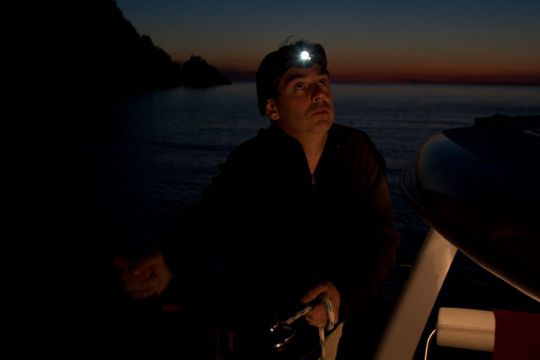
Why should we avoid bright lights?
During the adaptation phase, the eye makes sticks. These are irreparably destroyed if one is dazzled. In case of strong light, it is necessary to resume the night adaptation at the beginning... That is why it is not necessary to use violent lighting during a night navigation. No lamp to light the helmsman, no lighter to light a cigarette..
Only if necessary, use a light source so weak that it does not allow color perception. It should preferably be green. Contrary to what one thinks, red light should be avoided, because the sensitivity of the eye is very poor for this tint. This requires the use of relatively intense lighting to see details. The opposite of the hoped-for effect!
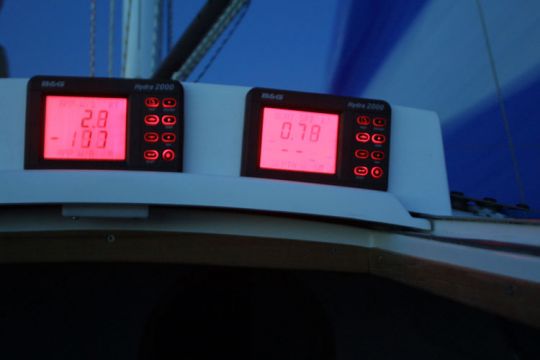
Night vision requires a good diet!
Proper nutrition is essential for good eyesight. Cones and rods use a vitamin A derivative to convert light energy into nerve impulses. In its direct form - retinol - vitamin A is present in quantities in foods of animal origin: fish oils, liver, egg yolk, but also... caviar!
But the body is also able to turn beta-carotene into vitamin A. It is found in carrots, spinach, sweet potatoes or red pepper and especially in lamb's lettuce salad. Melon, mango and apricots also contain fruit. Not forgetting the blueberries and black berries - blackcurrants, blueberries - which Allied pilots consumed a lot during the Second World War.
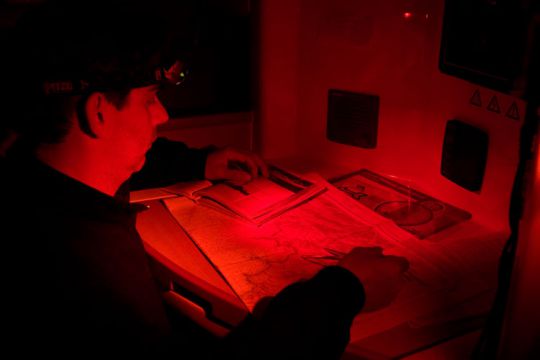
Why look at the dimly lit objects on the side?
At night, the cones are used to obtain maximum sensitivity. The cones and rods are not distributed in the same places of the retina. The cones are gathered near the axis of the eye (in the center), the rods surround this central zone. The area most sensitive to low illumination (the sticks) is offset from the center of the retina. To distinguish the weakest objects, one must therefore look slightly to the side. It is said that peripheral vision is then used.
For the sailor, this means looking at the horizon without looking in the centre. Light details (boat lights, headlights...) will be visible even at very low density.
